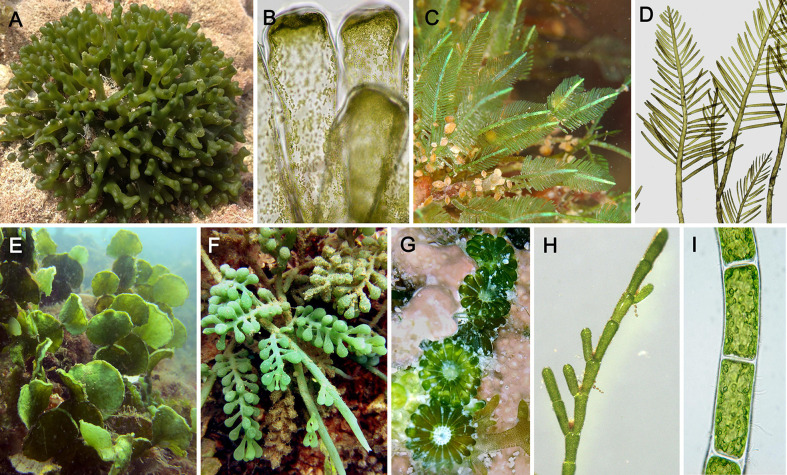Figure 1.
Morphological diversity among coenocytic green algae of the class Ulvophyceae. (A) Codium (Bryopsidales), forming spongy thalli composed of intertwined siphons and an outer layer of vesicles called utricles. (B) Codium, detail of utricles. (C) Bryopsis (Bryopsidales) composed of feather-like siphons. (D) Bryopsis, details. (E) Halimeda (Bryopsidales) forming complex thalli consisting of flattened calcified segments joint together by non-calcareous joints; segments composed of intertwined siphons and an outer layer of vesicles. (F) Caulerpa (Bryopsidales) forming large thalli composed of stolons anchored to the substrate by rhizoids, and upright photosynthetic fronds. (G) Parvocaulis (Dasycladales), forming thalli similar to Acetabularia, composed of a siphonous stalk and flattened terminal cap. (H) Cladophora (Cladophorales), consisting of branched filaments of multinucleate cells. (I) Chaetomorpha (Cladophorales), consisting of unbranched filaments. [Photo credits: (A) Codium intricatum, by Edward Steven, licensed under CC BY-SA 2.0, https://www.flickr.com/photos/138282132@N03/38293915915. (B) Codium vermilara, by Ignacio Barbara, licensed under CC BY-NC-SA 4.0, http://www.marbef.org/modules/photogallery/index.php?album=239&pic=15045. (D–F, H, I) Photo by F. Leliaert].

